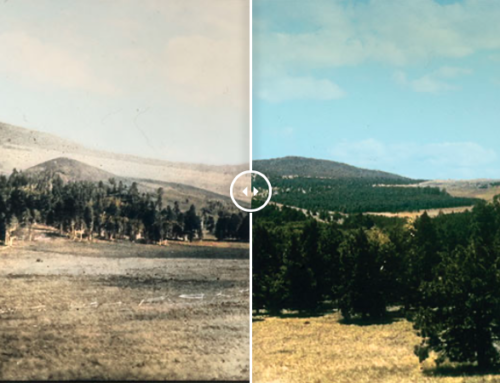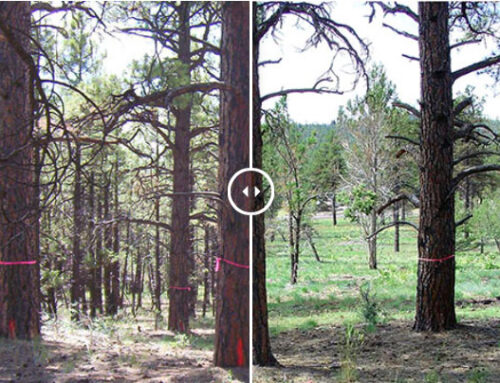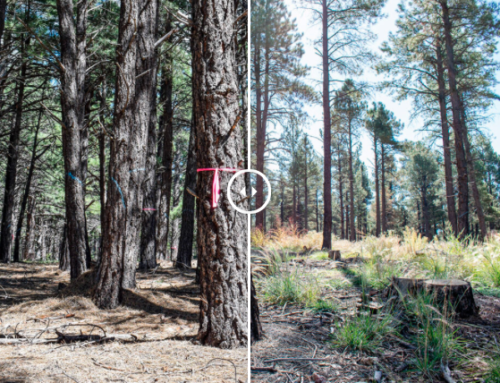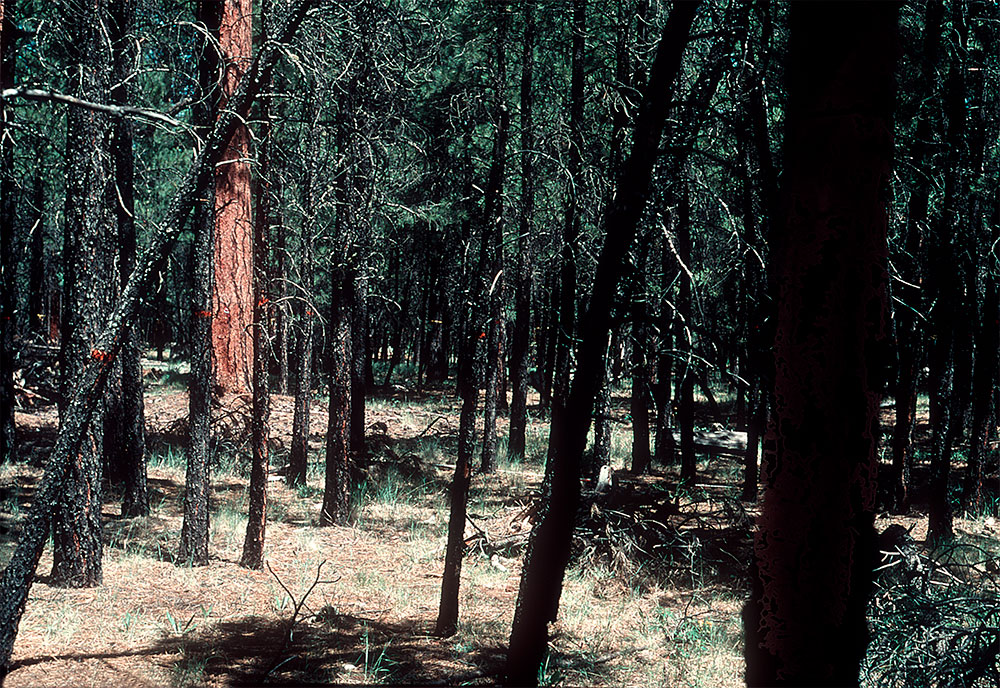
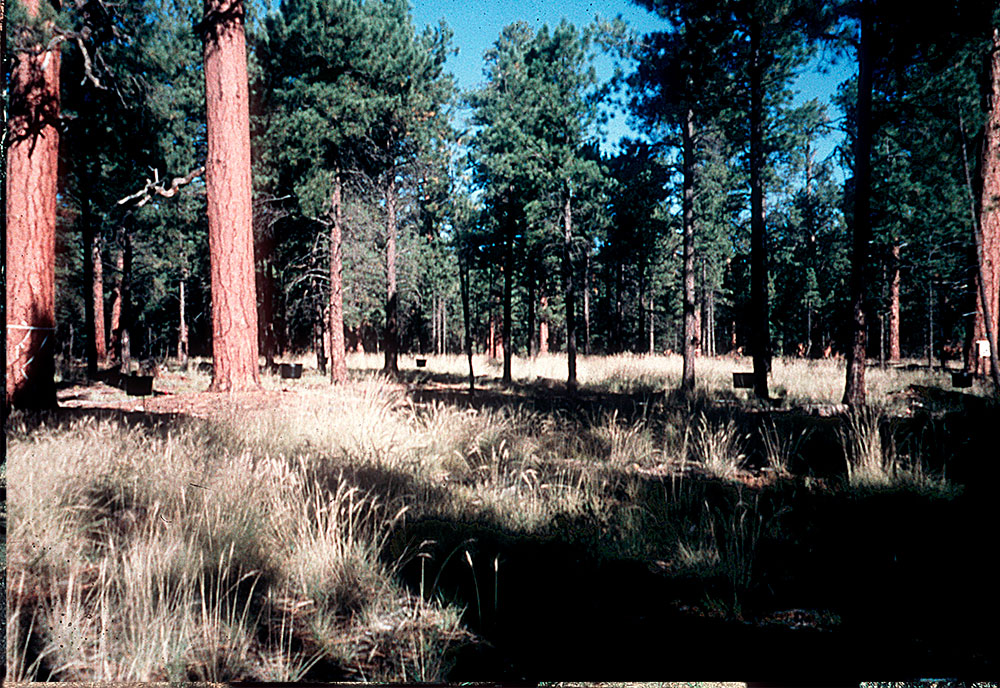
The use of repeat photography allows us to see the changes in forest structure over time.
This stand of ponderosa pine had 23 trees per acre in 1876, but there were 1,254 trees per acre—or 28.3 tons of biomass per acre—when the “before” photograph was taken in 1993.
The same stand, four years after thinning (1997), had been thinned to 60 trees per acre. Note the open forest structure and increase in understory vegetative growth.

